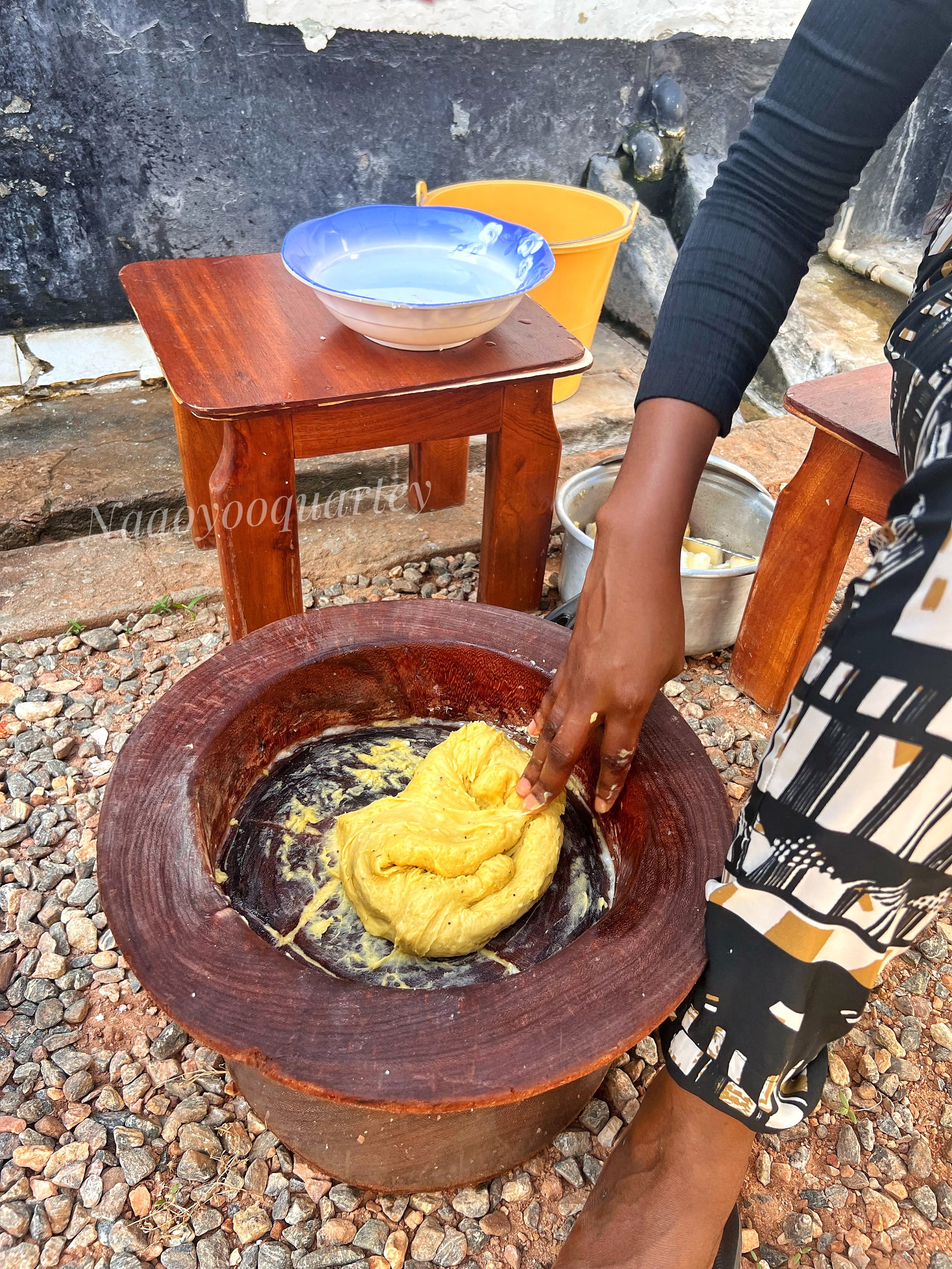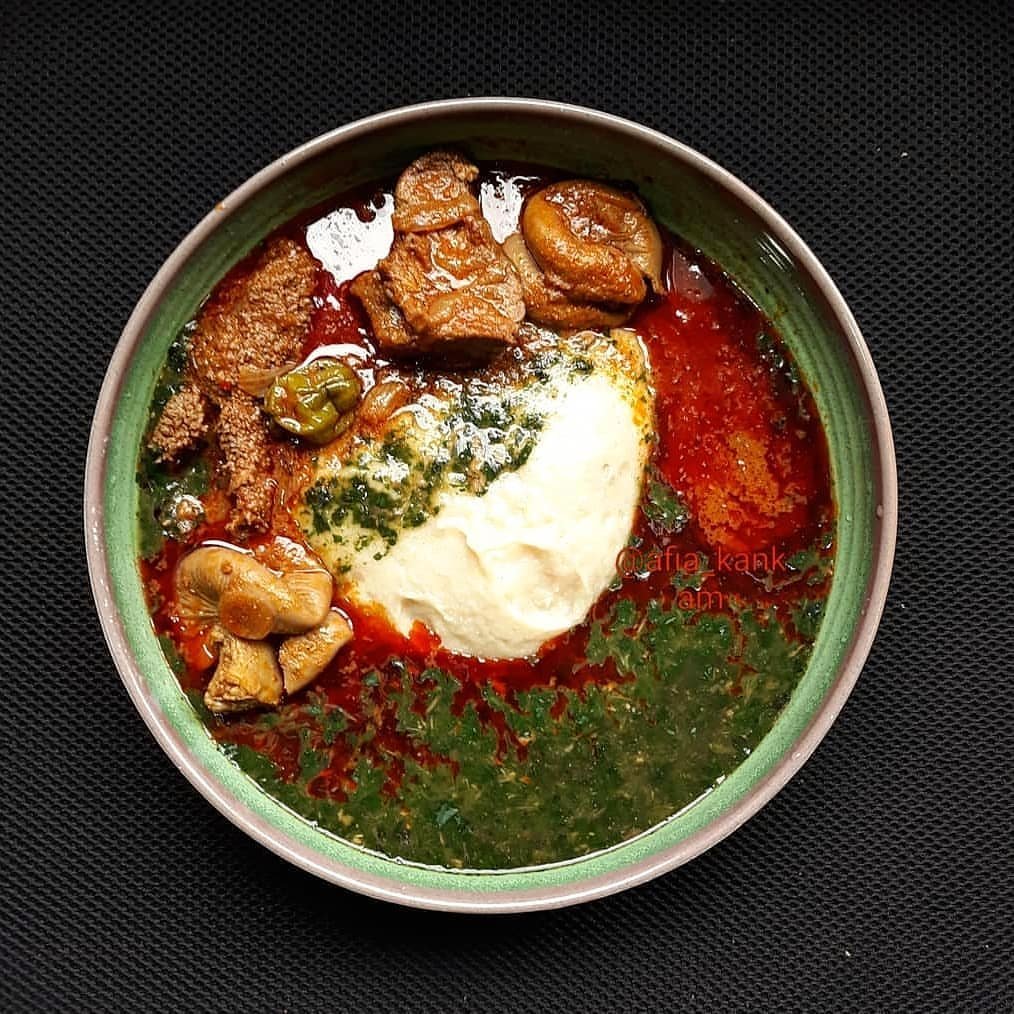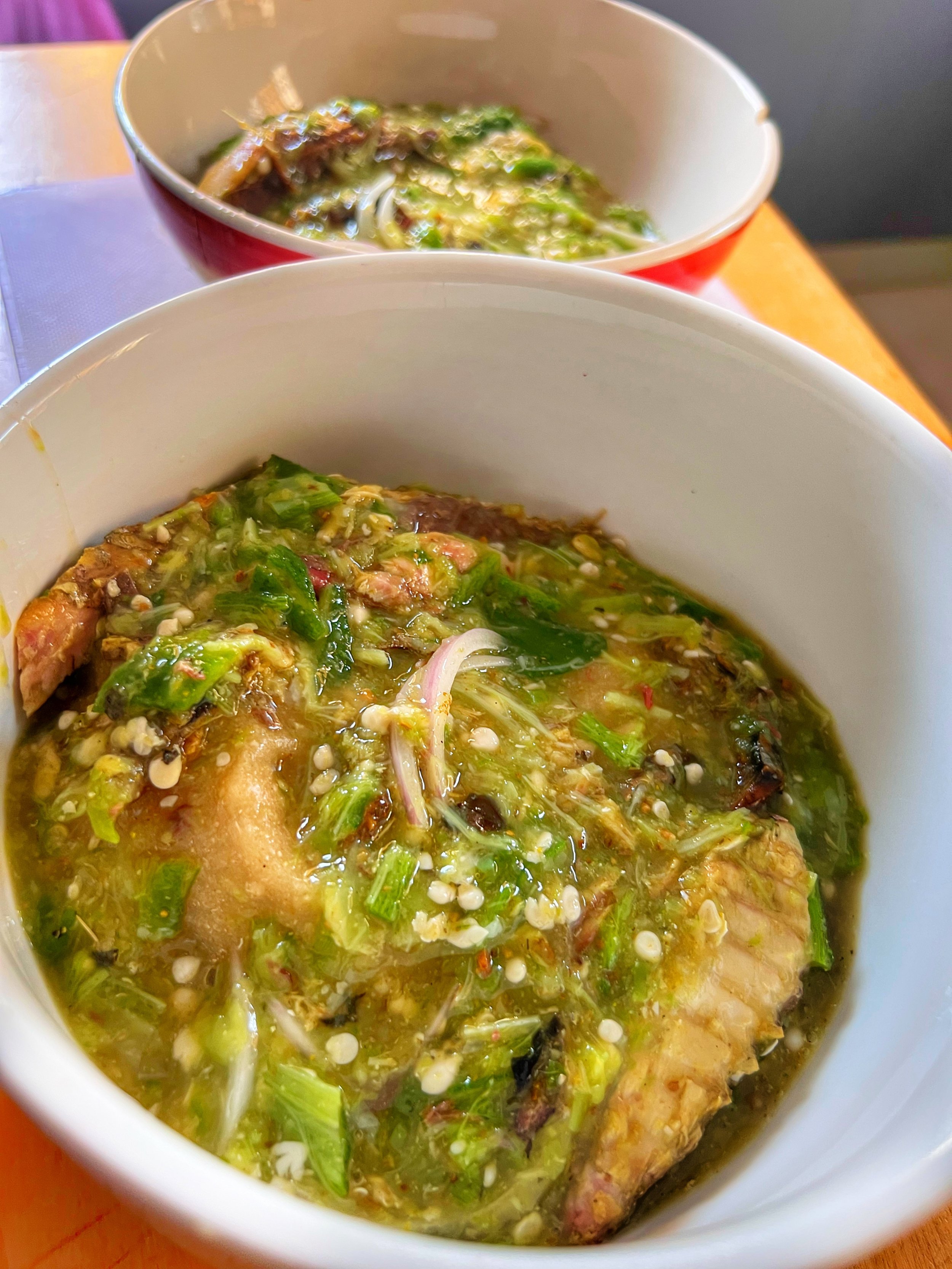The 8 Most Popular “Swallow” Foods in Ghana.
Ghanaian food is texturally varying just like any other cuisine around the world. There’s the crunchy (Gari) ) , creamy (Hausa Koko , Corn porridge etc), chewy (Gari fortor etc) and then there’s the swallows. The word “Swallow” is what we have affectionately given to mostly carb meals which require zero chewing only swallowing and have the texture ranging between sponginess and firm. These swallows are more famously appreciated with soups or stews and never on their own. Their base is mostly vegetable carbs, grains or cereal. The following are the most popular “swallow” foods you are bound to have a taste test of if you are new to Ghanaian cuisine.
1. Fufu
There’s just no place you’d visit in Ghana without anyone mentioning Fufu. Fufu is sacred to millions of Ghanaians who cannot live a week without it. The name Fufu is an Akan word with Ga’s pronouncing it as Fufui. Fufu is prepared from boiled green plantain, cassava, yam or cocoyam which are pounded in a mortar with a pestle. The mixture is then turned over several times with water until a wet doughy, spongy texture forms for easier swallowing. Fufu in Ghana is mostly eaten with soups such as Ebunuebunu (Cocoyam leaves soup) Tomato light soup, Groundut soup, Palm-nut soup etc and never with stew. Traditionally, Fufu is eaten with the fingers which almost snips the well-formed dough and then dipped in the soup before it’s eaten. Never chew Fufu! Chewing fufu is sacrilegious!
Pounding of fufu
2. Omo Tuo / Rice balls
Omo tuo has over the years been branded as a Sunday special meal to be eaten mostly at local food chop bars after or before church service. This has led to most people coining the term “Sundays are for swallows.” This popular white swallow is made from broken rice which is boiled until it thickens and then churned until it’s slightly solidified and finally shaped into balls. Groundnut soup is often the soup of choice for most Omo Tuo lovers whilst others go wild with a mixture of both palm-nut & groundnut soup.
3. Eba
Eba is more domestically popular than other swallows due to it’s propensity for the cassava starch to harden within a short time frame. Eba is made from Gari which is gently cooked and churned like Banku. It requires much less cooking time than it’s counterparts as the cassava starch cooks faster in hot water. Cassava is such a wonderful thickener! Eba is a homemade main accompaniment to stews such as Nkontonmire or Agushie stew. Eba in of itself is gluten-free and nut free.
4. Tuo Zaafi
Tuo-Zaafi or it’s shortened form TZ, is made from millet powder and one of my personal favorites when the conversation is revolving around addictive swallows in Ghana. I can eat TZ thrice in a week and yearn for more the following week. What makes TZ more incredulous is the soupy green & red sauce which accompanies it. What a beautiful combination of colors! The green soup is made from the leaves of the Jute mallow (Ademe) plant giving it a slippery slurpy texture whilst the red sauce is tomato based. When it’s being served the Tuo (millet ball) goes in first, followed by the green soup and lastly the red tomato sauce plus the beef offals! Tuo Zaafi by itself is almost bland in taste but embraced with this soup it’s absolutely divine and comforting like slipping into your lovers embrace after a rough week. It’s that comforting. In other parts of Ghana especially the north where it originated, the green soup is made from more diverse plant varieties such as sweet potato leaves and pumpkin leaves. It’s such a culinary revelation!
Image via Wikipedia commons
5. Banku
Banku is fermented corn mixed with cassava dough which is boiled and churned over the stovetop or coal pot. It’s a popular street food in Ghana sold with either grilled fish, pork, chicken or with soups and stews. A very versatile swallow if you ask me. The most popular combination of Banku is Banku & Okro soup not stew, soup. Followed closely by Banku & Tilapia or grilled snapper. Banku is ideal for vegetarians. Banku can be stored in the fridge for several days and when needed can be microwaved in the oven or better yet placed in hot boiling water for more freshness.
6. Sorghum Banku
Sorghum Banku is mistakenly called Millet Banku as many Ghanaians have mistaken sorghum grains from millet grains. Sorghum Banku is dark reddish in color due to red hue of the grains and once cooked is shaped into a ball. Sorghum grain is as ancient as it comes making it a sustainable crop we need to preserve and encourage in consumption. It’s super rich in fiber and vitamin B and other essential minerals. Of late, sorghum Banku is getting quite some attention at local restaurants like Azmera. You can eat sorghum Banku just like you do for regular corn Banku whilst the preparation of it is actually very simple.
7. Kokonte
Kokonte or Dzidzi in Ga is a sacred swallow in Ghana after Fufu. Dzidzi is made from dried fermented cassava flour which is cooked similarly to Banku but requires a heavier effort to churn due to the starch in cassava. Dried cassava roots contain about 70% starch. Kokonte is much heavier in texture and has a slippery texture softer than fufu which makes it a most ideal swallow. Konkonte is much appreciated with palmnut or groundnut soup with dashes of okro soup in them. Another street name for Kokonte is ‘Face the Wall”. I used to wonder about the origins of such a name for a meal until one day I ventured into the depths of 31st December Women’s Market and discovered a hidden hub of local food chop bars. The chop bar I selected couldn’t be called a bar more like a stall for it’s extremely limited space. I sat facing a wall whilst I downed down a bowl of steaming hot Kokonte and palm-nut soup and how I sweated! I came out of my food coma the next day! Have you tried Kokonte with Fetri-Toto before?
Kokonte with Fetri-Toto
8. Akple
Anytime you visit the Volta Region, stop at a local eatery and feed yourself a bowl of Ewor-akple or Amor-akple with Fetri-desti (okro soup) . Akple is a corn-based meal cooked similarly to Banku. There’s two types of Akple; Ewor kple which is purely unfermented cornflour churned and eaten hot and fresh out of the pot and Amor kple which is the same as corn Banku (fermented corn dough) . Akple can be eaten with AbobiTadi stew or any okro-based dish and soups as well. But it’s actually more preferable with slurpy soups for that easy slide down the throat. Classic!
These 8 swallows are majorly carbohydrates, high in fiber and easily accessible in the local market. Which is your absolute favorite in this list? Which swallow haven’t I mentioned ? Write it in the comments section and let’s grow in our local food knowledge !








